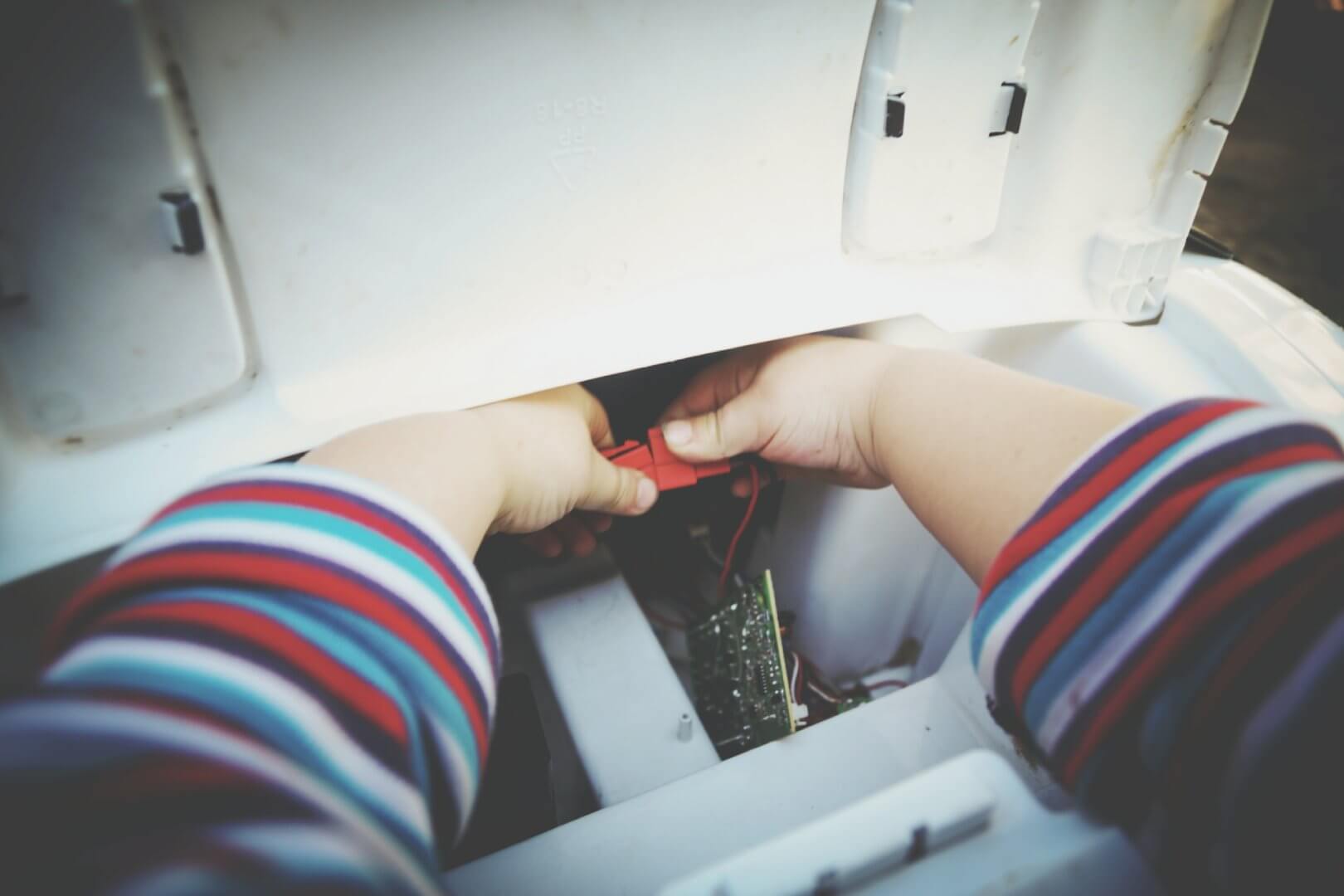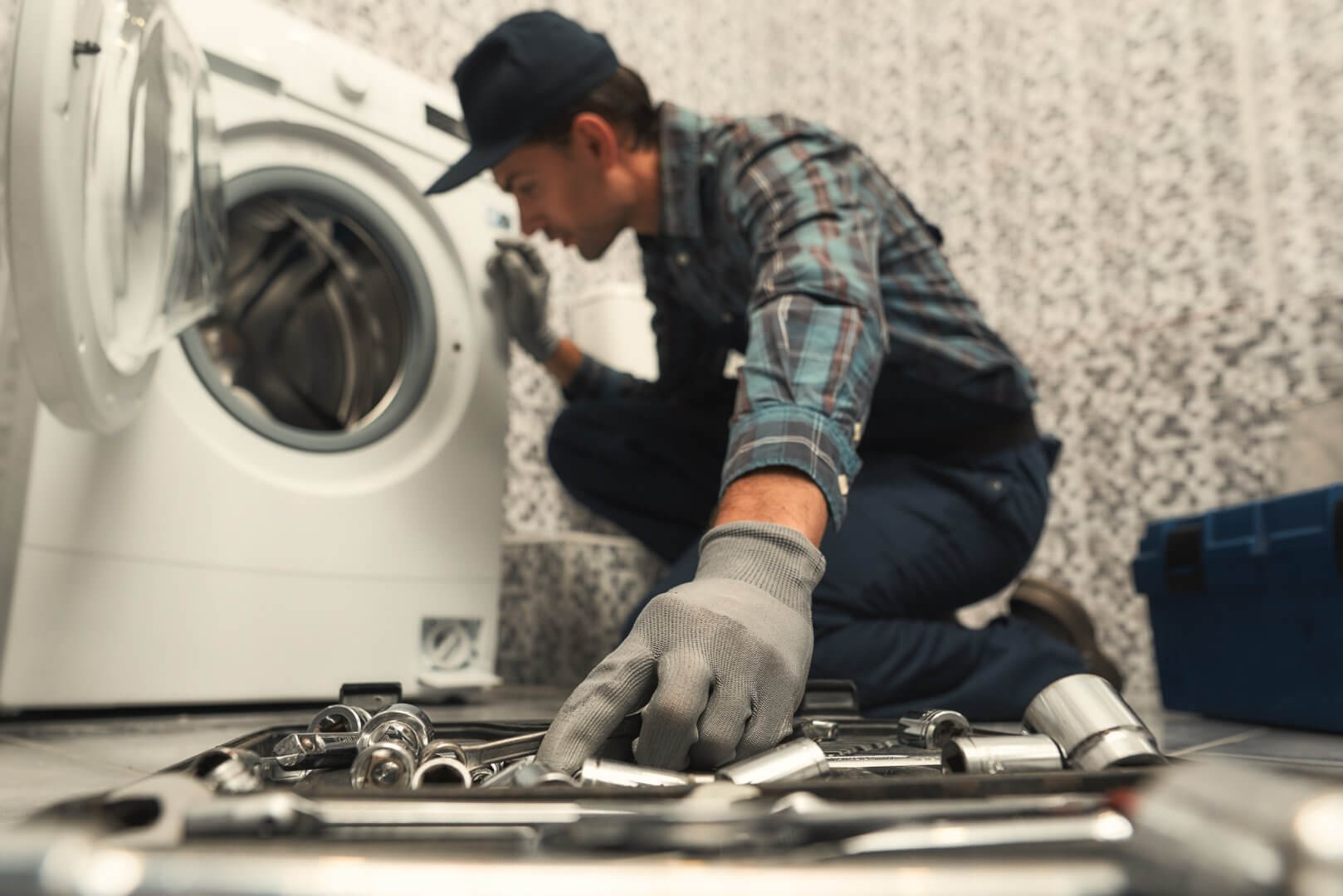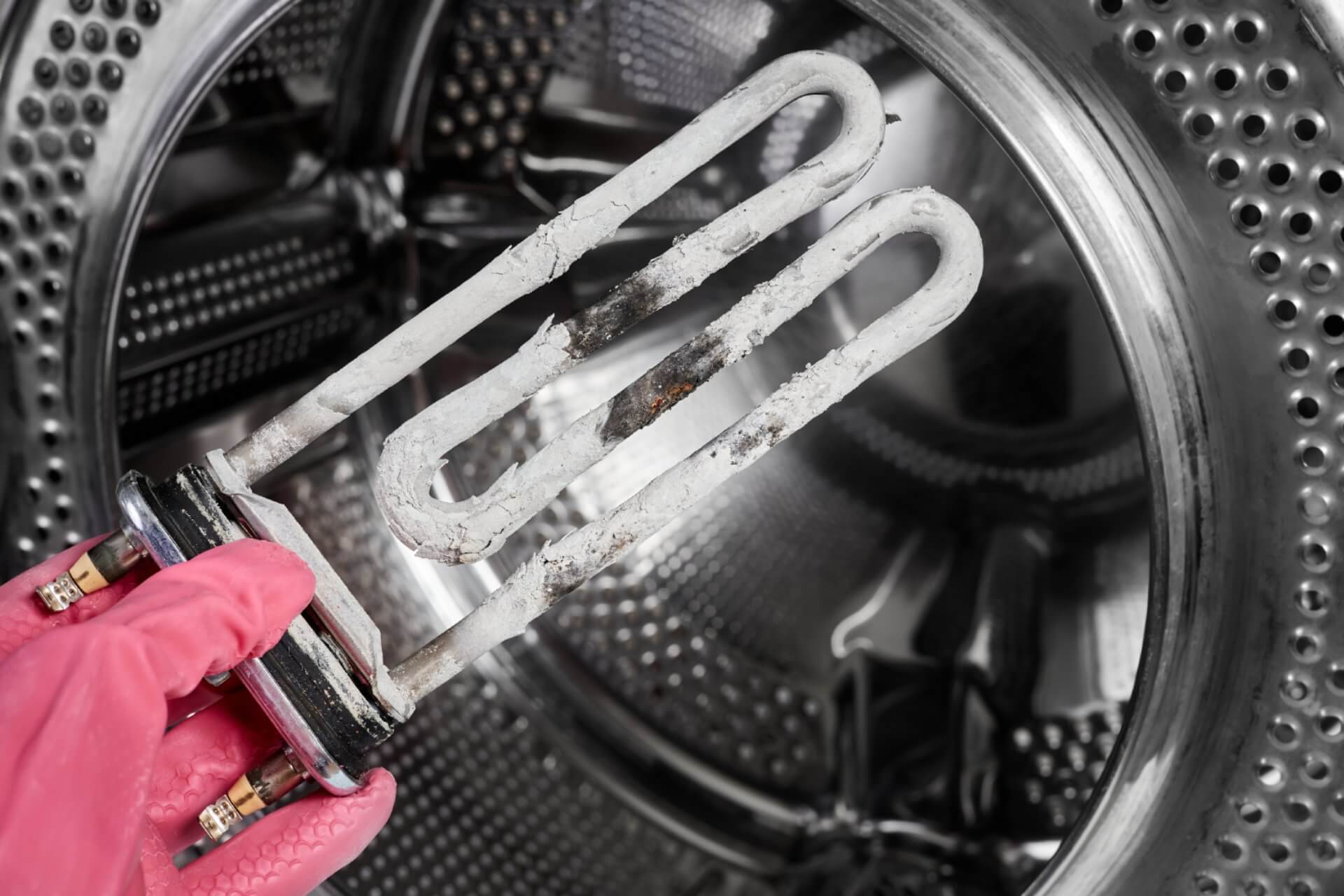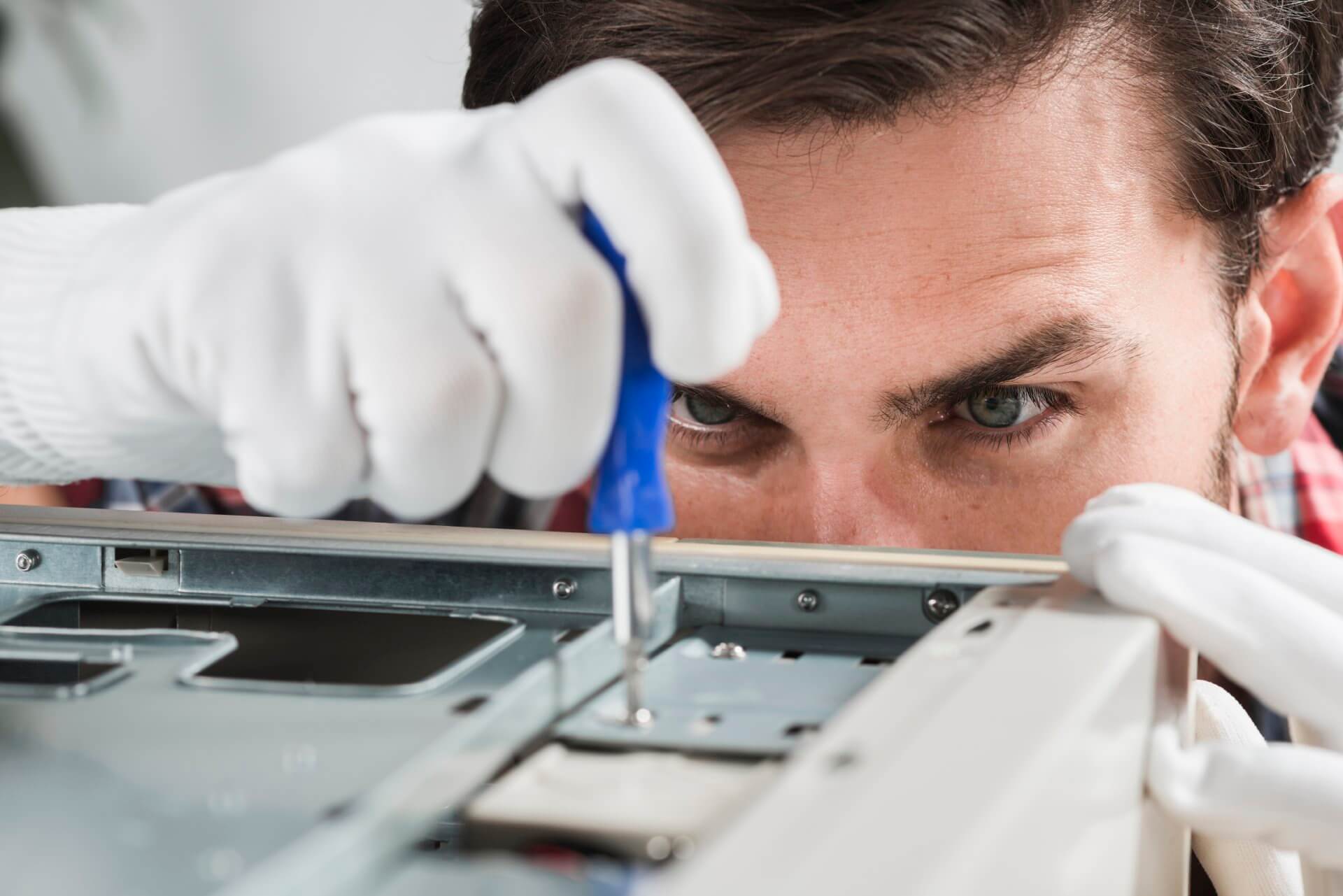7 Warning Signs Your Dryer Needs Professional Repair | Australian Safety Guide
We all love the convenience of a working dryer - until it suddenly stops performing as it should. While I'm usually the first to encourage DIY fixes for common dryer issues, there comes a point when calling in a professional isn't just recommended, it's essential for both safety and cost-effectiveness.
After helping hundreds of homeowners with their appliance problems, I've found that knowing when to put down the tools and pick up the phone can save you significant time, money, and potential hazards. This guide will help you recognise the 7 critical warning signs that your dryer has moved beyond the realm of DIY repairs.

When DIY Won't Cut It: 7 Signs You Need Professional Dryer Repair
1. Burning Smells or Smoke During Operation
What You'll Notice:
- Distinct burning odour that isn't just lint smell
- Visible smoke coming from any part of the dryer
- Burning smell that persists after cleaning lint traps and vents
- Discoloration or scorching on the dryer exterior or clothing
This is perhaps the most serious warning sign and warrants immediate action. Burning smells indicate something is overheating inside your dryer, creating a significant fire hazard.
Why Call a Pro: A professional technician has the tools and expertise to:
- Safely disconnect and inspect all electrical components
- Identify components that are overheating or shorting out
- Test for electrical faults that could cause fires
- Detect wiring issues that aren't visible to the untrained eye
Safety Warning: According to AS/NZS 3000 (Australian Electrical Safety Standards), electrical issues that cause burning smells could indicate insulation breakdown or component failure that significantly increases fire risk. Never continue to use a dryer emitting burning smells or smoke.

2. Electrical Issues and Breaker Tripping
What You'll Notice:
- Circuit breaker trips repeatedly when the dryer runs
- Dryer randomly shuts off mid-cycle
- Sparking from control panel or power cord
- Control panel unresponsive or displaying error codes
- Tingling sensation when touching the dryer (immediately disconnect power!)
Electrical problems are both potentially dangerous and typically complex enough to warrant professional expertise.
Why Call a Pro: Electrical issues require specialised knowledge to:
- Perform proper voltage and continuity testing
- Safely replace internal wiring or components
- Diagnose control board failures
- Ensure repairs meet Australian electrical safety standards
- Check for proper grounding according to regulations
Professional Insight: Statistics from Fire and Rescue NSW show that approximately 35% of residential fires are caused by electrical faults in appliances. A professional repair now could prevent a devastating house fire later.

3. Drum Won't Turn Despite Motor Running
What You'll Notice:
- You hear the motor humming but the drum doesn't rotate
- Drum turns very slowly or with great difficulty
- Burning rubber smell accompanies attempts to start
- Loud grinding when the drum tries to turn
While some drum issues like a broken belt can be DIY-friendly, many situations require professional expertise, especially when the motor is running but the drum won't turn.
Why Call a Pro: A professional can:
- Safely disassemble the dryer to access deep internal components
- Diagnose whether the issue is with the belt, motor coupler, transmission, or drum bearings
- Access and replace parts that typically require special tools
- Ensure all components are properly aligned after repair
Cost Consideration: When the drum won't turn despite the motor running, there's often damage to multiple components. Professional diagnosis prevents the common DIY pitfall of replacing parts sequentially without fixing the underlying issue – ultimately saving you money despite the service call cost.

4. Significant Water Leaks (Combo Units)
What You'll Notice:
- Water pooling around or underneath the dryer
- Dripping sounds during or after operation
- Dampness on nearby walls or flooring
- Washer-dryer combo units showing error codes related to draining or water systems
While standard dryers don't use water, washer-dryer combo units can develop leaks that require professional attention due to their complex integrated systems.
Why Call a Pro: Water leaks in combination units need expertise to:
- Correctly diagnose whether the issue is in the washing or drying system
- Access sealed components without causing additional damage
- Replace water pumps, seals, or valves properly
- Ensure water systems don't compromise electrical components
- Test for proper operation after repair
Australian Context: According to data from insurance providers, water damage from appliance leaks costs the average Australian household $5,000-7,000 in repairs – making professional intervention for leaks a wise investment.

5. Gas Dryer Issues
What You'll Notice:
- Gas dryer not heating at all
- Rotten egg smell (potential gas leak)
- Dryer taking much longer than normal to dry clothes
- Yellow or orange flame instead of blue when viewing the burner
Gas dryers involve both gas and electrical systems, adding complexity and safety concerns that typically exceed DIY capabilities.
Why Call a Pro: Gas dryer repairs require specialised knowledge to:
- Safely work with gas connections and components
- Test gas pressure and flow rates
- Replace ignition components or gas valves
- Ensure all repairs comply with AS/NZS 5601 (Gas Installations) standards
- Verify there are no gas leaks after repair
Safety Warning: Gas dryer repairs in Australia legally require licensed professionals. According to Energy Safe Victoria and similar authorities across Australia, DIY gas appliance repairs are not only dangerous but can also invalidate insurance coverage and violate residential building codes.

6. Complete Failure to Power On
What You'll Notice:
- Dryer shows absolutely no signs of life when turned on
- No lights, sounds, or movement whatsoever
- Tried different outlets but still no response
- After checking the outlet works with other appliances and confirming circuit breakers aren't tripped
When your dryer won't power on at all, the problem typically involves major electrical components that require professional diagnosis.
Why Call a Pro: Complete power failure indicates problems that professionals are best equipped to handle:
- Testing internal fuses not accessible to most homeowners
- Diagnosing control board failures
- Checking all wiring connections throughout the machine
- Safely replacing major electrical components
- Testing the terminal block where power enters the dryer
Repair vs. Replace Consideration: When a dryer won't power on at all, professional diagnosis is crucial to determine if repair makes economic sense. A technician can advise whether the likely repair cost justifies fixing a unit versus replacing it, especially for dryers over 8 years old.

7. Excessive Vibration That DIY Solutions Don't Fix
What You'll Notice:
- Dryer walks across the floor during operation
- Violent shaking despite being properly leveled
- Extremely loud operation that's worsened over time
- Vibration that continues after replacing support rollers and drum belt
While some vibration issues can be solved with DIY leveling, persistent severe vibration usually indicates deeper mechanical problems.
Why Call a Pro: Severe vibration issues often require professionals to:
- Disassemble the cabinet to inspect internal components
- Diagnose bearing failures in hard-to-reach locations
- Check for drum damage or deformation
- Assess motor mount integrity and replace if necessary
- Test for damage to the drive system or blower assembly
Maintenance Tip: Excessive vibration doesn't just create annoying noise – it accelerates wear on all components. Professional repair of the root cause can extend your dryer's overall lifespan by 3-5 years compared to simply living with the problem.

Signs a Repair May Not Be Worth It
Sometimes, even professional repair isn't the best option. Consider replacement when:
-
Your dryer is over 10 years old and facing a major component failure. The average lifespan of a dryer is 10-13 years.
-
The repair estimate exceeds 50% of replacement cost. Modern energy-efficient models might offer long-term savings despite the higher upfront cost.
-
This is the third major repair in two years. Frequent breakdowns indicate systemic failure is beginning.
-
Parts are no longer available or have extended backorder times.
-
Your energy bills have been steadily increasing despite regular maintenance, suggesting declining efficiency.
Choosing the Right Professional for Dryer Repair
Not all repair services are equal. When selecting a technician:
-
Verify proper licensing — In Australia, technicians should have relevant electrical licences and, for gas dryers, gas fitting qualifications.
-
Check for insurance — Ensure they carry liability insurance to protect your property.
-
Ask about warranties — All our repairs come with a 1-year warranty on parts and labour. If you experience the same issue with the repaired appliance within the warranty period, we'll reinspect it for free.
-
Look for brand experience — Technicians with specific experience on your dryer brand will often work more efficiently.
-
Read reviews from multiple sources to gauge reliability and quality.
Conclusion
While I'm always a proponent of DIY fixes for simple dryer issues, recognising when a problem exceeds your capabilities is just as important as knowing how to clean a lint filter or replace a belt. The warning signs we've covered represent situations where professional expertise not only saves time but also ensures safety and potentially prevents more expensive damage.
Remember that many homeowner's insurance policies won't cover damage resulting from improper DIY repairs, particularly when it comes to gas appliances or significant electrical work. The cost of a professional repair call is minor compared to the potential financial and safety risks of a repair gone wrong.
Your dryer is designed to last 10-15 years with proper care, and knowing when to call in the professionals is an important part of achieving that lifespan!

Frequently Asked Questions (FAQs)
How much does professional dryer repair typically cost in Australia? Professional diagnosis typically costs $120-200 for a service call. Simple repairs like belt replacement might add $150-250, while major repairs such as motor or heating element replacement range from $300-500. Since new dryers start around $600-1,200, repairs under $400 are typically worth considering for dryers less than 8 years old.
How can I tell if my dryer problem is something I can fix myself? Simple issues like cleaning vents, replacing thermal fuses, or even belt replacement can be DIY-friendly. However, if the problem involves gas components, complex electrical issues, complete power failure, or anything producing burning smells or smoke, it's time to call a professional.
Is it worth having my dryer serviced regularly to prevent major repairs? Yes! Annual maintenance by a professional (costing $100-150) can identify wear before it leads to failure and extend your dryer's life by up to 50%. This is particularly important for gas dryers, where preventive maintenance also addresses safety concerns.
My dryer is making an unusual noise but otherwise working fine. Should I call a professional? Begin with DIY troubleshooting for common noises. Clean the lint filter and vent, check for loose items, and inspect accessible parts like the belt and idler pulley. If these steps don't resolve the issue or if the noise is getting worse, professional diagnosis can prevent a minor issue from becoming a major repair.
How long should a professional dryer repair last? Quality repairs performed by licensed professionals should last at least 2-3 years. If you experience similar problems within months of a repair, either the underlying issue wasn't properly diagnosed or the dryer may be reaching the end of its useful life.
Can I keep using my dryer until the repair technician arrives? It depends on the symptom. Never continue using a dryer that shows signs of electrical problems, makes burning smells, produces smoke, or has a potential gas leak. For less critical issues like longer drying times or unusual noises, limited use is typically okay until your scheduled repair, though continuing use may cause additional damage.

About Julian
Home appliance enthusiast and DIY repair specialist with a passion for helping others save money on appliance maintenance.
Related Articles

Dryer Not Drying Clothes? 5 Essential DIY Fixes | Australian Guide

Dryer Squeaking? 6 DIY Fixes to Silence Noisy Dryers | Australian Guide

